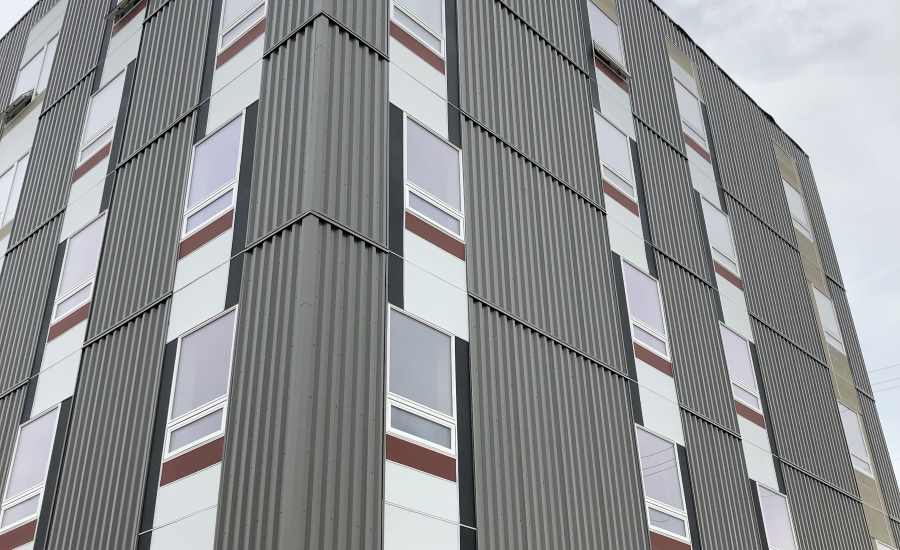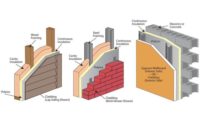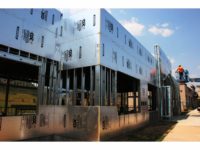Apartments Use Continuous Insulation for Green Energy Standards

Minnesota is taking exciting steps toward green energy standards. The state’s first-ever Passive House multifamily development, the Hook and Ladder Apartments, opened October 2019 in Northeast Minneapolis. While impressive in its own right, the work-force priced complex is garnering attention for more than its stature as a statewide first. The project is set to prove just how much of a difference Passive House construction can make in operations cost and occupant comfort compared to buildings designed to conventional energy codes.
To create a real-time project demonstration, LHB Architects designed the Hook and Ladder complex as a side-by-side experiment with two adjoined, nearly identical apartment buildings. One set of the look-alike apartment complexes is built to state energy code specifications, the other to the Passive House Institute U.S (PHIUS) 2015 standard.
Passive House standards require upgraded ventilation to improve air quality, as well as tight energy-usage restrictions for heating and cooling. To block pathways for hot or cold air traveling out of the building, and to preserve energy, the project team focused on providing continuous insulation (ci) in the building envelope. According to the project’s panelizer, Mike Klefstad from Glenbook Building Supply, Inc. & Edgebuilder Inc., “The building employs continuous insulation throughout its entire envelope without any thermal bridging. It is also very airtight.”
To create the apartment complex’s efficient building envelope, the project team selected Hunter Panels’ Xci NB. The high-thermal rigid insulation panels are composed of a closed-cell polyisocyanurate (polyiso) foam core bonded to a premium performance coated glass facer on one side and either OSB (7/16”, 5/8”) or plywood (5/8”, 3/4”) on the other.
With a superior combination of high insulating properties and a nailable surface, Xci NB can assist in meeting Passive House and other stringent energy standards, including ASHRAE 90.1, IECC, IBC and IRC standards. “The energy design requirements of Passive House required continuous insulation on the exterior of the building and Hunter Panels allowed us to accomplish this,” said Dave Einck, senior project manager at Frerichs Construction.
Xci NB also helped those working on the project to meet the required R-value. “In addition to batt insulation in the wall cavities, the Hunter Panels product gave us the necessary R-value to pass the Passive House standards,” said Einck. Polyiso panels offer increased R-value per-inch of thickness versus mineral fiber, XPS or EPS options. The composite Xci NB panel allows the insulation and the cladding attachment substrate to be installed together as one piece. This method of installation allows the crews to install product faster, handle fewer materials, and achieve thinner wall profiles. With this level of streamlined installation, project managers can reduce labor costs and project timelines.
The completed Hook and Ladder Apartment complex officially open in October 2019. Through this side-by-side comparison, building professionals are hoping to prove just how much Passive House construction can reduce operating costs and improve occupant comfort in multifamily buildings. The new addition to the vibrant Northeastern Minneapolis Arts District will also include exhibit space for artists residing at the Hook and Ladder Apartments to display their creations. The end goal of the project is to couple energy-efficiency with outdoor and indoor amenities to unify a community of residents through art and healthy living spaces.
Looking for a reprint of this article?
From high-res PDFs to custom plaques, order your copy today!






